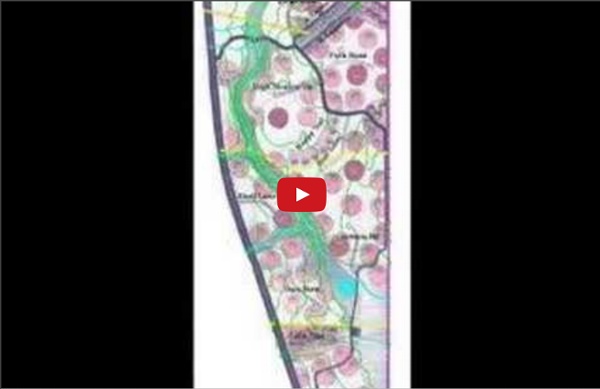



Earthship 8 Lessons to Help You Prepare for Your Earthship Build Last fall we spent three months building our Earthship-inspired greenhouse. It was messy, unnecessarily long, cold, and fraught with unpredictable challenges. We thought that the integrity of our mission plus the enthusiasm of our team and our supporters would be enough to get the local municipality on our side. We thought that our plans would be approved in no time. Now that spring is about to blossom, it is prime time to begin planning your build! 1. Our mistake Due to stringent agricultural land laws, we couldn’t build a makeshift bathroom on our land or let people camp out there. The lesson It is absolutely CRUCIAL to understand what your team needs. Residential and commercial building codes are very complex in the United States and Canada, so do plenty of research and make sure that your dream Earthship complies with both federal and state/provincial laws! Make sure you know: What kind of zoning is my land considered? Canada: The United States: 2. Some background Our solution 3. 4. 5.
Advantages of Partially Submerged Houses Environmentally friendly families often convert their houses to run more efficiently, or use heating and recycling devices to limit their damage to the planet. One of the more extreme methods of living in environmentally friendly houses is to move into a custom built partially submerged house. These houses are built into the sides of hills, or partially underground, so that they can harness the natural geothermic energy of the house. While there are not very many of these houses available at present, they may become more popular as people become more concerned about their energy consumption. Earth Sheltered Buildings Some of these geothermic houses are called Earth Sheltered buildings. Hill-Built Houses Partially submerged buildings can be built by digging into hills, and building part of the house within that excavation. Water-Based Houses A new idea in the field of energy-saving by constructing houses in the ground is the notion of the partially submerged water-based house.
Earthship Seminar 2009 DVD2 - Earthship Szeminárium 2009 DVD2 (Subtitles: coming soon) Earthship South and East view of an Earthship passive solar home Earthship typical floorplan Earthships are primarily designed to work as autonomous buildings using thermal mass construction and natural cross ventilation assisted by thermal draught (Stack effect) to regulate indoor temperature. Earthships are generally off-the-grid homes, minimizing their reliance on public utilities and fossil fuels. Earthships are built to utilize the available local resources, especially energy from the sun. History[edit] Michael Reynolds' first building, the Thumb House. A building being built of cans in the 1970s The design used with most earthships. Eventually, Reynolds' vision took the form of the common U-shaped earth-filled tire homes seen today. Rammed-earth and tires are easily accessible and allow for owner build structures and use of untrained labour. The earth-rammed tires of an Earthship are usually assembled by teams of two people working together as part of a larger construction team. Systems[edit]
earth-sheltered home Also known simply as an earth home, a dwelling that is partially or totally underground (see underground home) or that has earth berms around some or all of its exterior walls (see bermed earth-sheltered home). Earth-sheltered homes can be tailored to a wide range of climates and a variety of types of building sites – even flat ones. Combined with passive solar design, an earth-sheltered home can save tens of thousands of dollars in fuel bills over a lifetime. Earth-sheltered homes are comfortable, affordable and energy efficient. And, if thoughtfully designed, they allow in plenty of natural light and are far less of an imposition on the landscape than conventional above-ground houses. Advantages There are many advantages to earth-sheltered construction. Because earth covers part or all of their exterior, earth-sheltered houses require less outside maintenance, such as painting and cleaning gutters. Disadvantages Site-specific factors for earth-sheltered home design Climate and topography
ATLANTIS 2012: Meet Charlotte Hodgson, Earthship Intern Earthship...des maisons pour pas cher! - wikistrike.over-blog.com Earthship...des maisons pour pas cher! Les Earthships (ou Vaisseaux terrestres) sont des habitations inventées par l'architecte américain Mickael Reynolds dans les années 70 avec comme perspective de créer des habitations totalement autonomes à moindre coût. Pour atteindre ses objectifs, Mickael Reynolds s'est basé sur : * la récupération de matériaux (pneus usés, des canettes, des bouteilles en verre, chutes de bois...), * la production d'énergie à l'aide de panneaux solaires, d'éoliennes ou d'autres sources d'énergies renouvelables, * une orientation au sud, * une construction de mur isolante massive, * la récupération et l'épuration des eaux de pluie. Le but ultime des Earthships étant l'auto-suffisance, on peut également trouver des toilettes sèches, et autres installations, afin de recycler les déchets humains pour rendre le raccordement aux égouts inutiles Concept Michael Reynolds commença dans les années 70 à concevoir une habitation durable et peu chère. Construction d'un Earthship
Free Plans Several free plans by Owen Geiger are now available: Preview the Economizer House Plan here.Economizer House Plan PDF Solar Pit House PDF Preview the Solar Pit House plan here. esert Shelters PDF Preview Desert Shelters by searching this phrase in the built-in search in the right hand column. Craftsman Bamboo/Plastic Bottle House PDF (Honorable Mention in Shelters for All housing competition) Preview the Craftsman plan here. oot Cellar Plan Earthbag House for Haiti View download complete complete plans at Teach Democracy.org. Want to see more plans? Accueil | Solution Era | Québec Accueil - La serre du futurLa serre du futur | Ici et maintenant ! Earthship & Académie - LaMatière